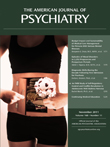Gray Matter Volume Abnormalities in ADHD: Voxel-Based Meta-Analysis Exploring the Effects of Age and Stimulant Medication
Abstract
Objective:
Structural neuroimaging studies in attention-deficit hyperactivity disorder (ADHD) have been relatively inconsistent and have mainly been conducted with pediatric samples. Furthermore, there is evidence that stimulant medication may have an effect on brain structure. The authors conducted a meta-analysis of voxel-based morphometry studies in children and adults with ADHD and examined the potential effects of age and stimulant medication on regional gray matter volumes.
Method:
The PubMed, ScienceDirect, Web of Knowledge, and Scopus databases were searched for articles published between 2001 and 2011. Manual searches were also conducted, and authors of studies were contacted for additional data. Coordinates were extracted from clusters of significant gray matter difference between ADHD patients and healthy comparison subjects. Metaregression methods were used to explore potential age and stimulant medication effects.
Results:
Fourteen data sets comprising 378 patients with ADHD and 344 healthy subjects met inclusion criteria. The ADHD group had global reductions in gray matter volumes, which were robustly localized in the right lentiform nucleus and extended to the caudate nucleus. Both increasing age and percentage of patients taking stimulant medication were found to be independently associated with more normal values in this region. Patients also had slightly greater gray matter volumes in the left posterior cingulate cortex.
Conclusions:
These findings confirm that the most prominent and replicable structural abnormalities in ADHD are in the basal ganglia. They furthermore suggest that ADHD patients may progressively catch up with their developmental delay with advancing age and that use of stimulant medication may be associated with normalization of structural abnormalities in ADHD, although longitudinal studies are needed to confirm both observations.



